|
|
Creator | Title | Description | Subject | Date |
| 1 |
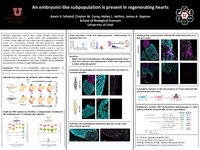 |
Schmind, Alexis V | An embryonic-like subpopulation is present in regenerating hearts | Zebrafish regenerate injured heart tissue through cardiomyocyte dedifferentiation, but it's unclear which cell subpopulations are involved. | zebrafish heart regeneration; medaka; cardiomyocytes | 2021 |
| 2 |
 |
Lawton, Kristy J. | Motor neurons tune premotor activity in a vertebrate central pattern generator | Central patterns generators (CPGs) are neural circuits that drive rhythmic motor output without sensory feedback. Vertebrate CPGs are generally believed to operate in a top-down manner in which premotor interneurons activate motor neurons that in turn drive muscles. In contrast, the frog (Xenopus la... | CPG; feed back; synchrony; vocal; vocalization; Xenopus | 2017 |
| 3 |
 |
Yamaguchi, Ayako | Development of an acute method to deliver transgenes into the brains of adult Xenopus laevis | The central vocal pathway of the African clawed frog, Xenopus laevis, is a powerful vertebrate model to understand mechanisms underlying central pattern generation. However, fast and efficient methods of introducing exogenous genes into the neurons of adult X. laevis are currently not available. Her... | viral vector; vesicular stomatitis virus; Xenopus laevis; transgene; neurons; vocalizations; central pattern generator; electroporation | 2018 |
| 4 |
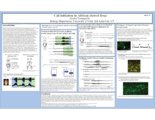 |
Yamaguchi, Ayako | Call initiation in African clawed frogs | Society for Neuroscience Meeting 2016 | vocalizations; Xenopus laevis | 2016 |
| 5 |
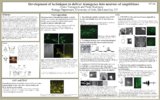 |
Yamaguchi, Ayako | Development of techniques to deliver transgenes into neurons of amphibians | Society for Neuroscience Meeting 2017 | viral vector; Xenopus laevis; vocalizations | 2017 |
| 6 |
 |
Yamaguchi, Ayako | Rhythm generation, coordination, and initiation in the vocal pathways of male African clawed frogs | | central pattern generator; vocalization; parabrachial area; hindbrain; bilateral coordination; motor programs | 2016 |
| 7 |
 |
Hughes, Kelly T. | FliT selectively enhances proteolysis of FlhC Subunit in FlhD4C2 complex by an ATP-dependent protease, ClpXP | We previously reported that the ClpXP ATP-dependent pro-tease specifically recognizes and degrades the flagellar master transcriptional activator complex, FlhD 4C2, to negatively control flagellar biogenesis. The flagellum-related protein, FliT, isalso a negative regulator of flagellar regulon by in... | | 2014-01-01 |
| 8 |
 |
Olivera, Baldomero M. | Combined proteomic and transcriptomic interrogation of the venom gland of conus geographus uncovers novel components and functional compartmentalization | Cone snails are highly successful marine predators that use complex venoms to capture prey. At any given time, hundreds of toxins (conotoxins) are synthesized in the secretory epithelial cells of the venom gland, a long and convoluted organ that can measure 4 times the length of the snail's body. In... | | 2014-01-01 |
| 9 |
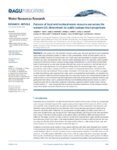 |
Ehleringer, James R. | Patterns of local and nonlocal water resource use across the western U.S. determined via stable isotope intercomparisons | In the western U.S., the mismatch between public water demands and natural water availability necessitates large interbasin transfers of water as well as groundwater mining of fossil aquifers. Here we identify probable situations of nonlocal water use in both space and time based on isotopic compari... | | 2014-01-01 |
| 10 |
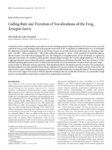 |
Yamaguchi, Ayako | Coding rate and duration of vocalizations of the frog , Xenopus laevis | Vocalizations involve complex rhythmic motor patterns, but the underlying temporal coding mechanisms in the nervous system are poorly understood. Using a recently developed whole-brain preparation from which "fictive" vocalizations are readily elicited in vitro, we investigated the cellular basis of... | | 2012-08-29 |
| 11 |
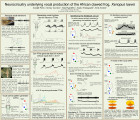 |
Yamaguchi, Ayako | Neurocircuitry underlying vocal production of the African clawed frog, Xenopus laevis | This poster describes how motor and premotor neurons are interconnected to each other using electrophysiological and pharmacological techniques. | Vocalizations; Central pattern generator; Motor programs; Premotor neurons; Whole-cell patch-clamp recordings | 2014 |
| 12 |
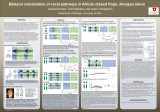 |
Yamaguchi, Ayako | Bilateral coordination of vocal pathways in African clawed frogs, Xenopus laevis | This poster describes how bilateral coordination of motor programs are achieved in the central vocal pathways of African clawed frogs. | Vocalizations; Central pattern generator; Motor programs; Bilateral coordination | 2014 |
| 13 |
 |
Yamaguchi, Ayako | Distinct neural control of vocal phases in frog calls | This poster describes how the connections within the central vocal pathways of African clawed frogs are responsible for coordinating distinct part of their calls. | Vocalizations; Central pattern generators, Motor programs | 2013 |
| 14 |
 |
Sekercioglu, Cagan | Importance of Ethiopian shade coffee farms for forest bird conservation | Coffee is the most important tropical commodity and is grown in high-priority areas for biological conservation. There is abundant literature on the conservation value of coffee farms internationally, but there has been little research on this topic in Africa. Ethiopia is a diverse and little-studie... | | 2014-01-01 |
| 15 |
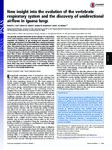 |
Cieri, Robert | New insight into the evolution of the vertebrate respiratory system and the discovery of unidirectional airflow in iguana lungs | The generally accepted framework for the evolution of a key feature of the avian respiratory system, unidirectional airflow, is that it is an adaptation for efficiency of gas exchange and expanded aerobic capacities, and therefore it has historically been viewed as important to the ability of birds ... | | 2014-11-17 |
| 16 |
 |
Hughes, Kelly T. | Bacterial flagellin-specific chaperone FliS interacts with anti-sigma factor FlgM | Flagella are extracellular organelles that propel bacteria. Each flagellum consists of a basal body, a hook, and a filament. The major protein of the filament is flagellin. To prevent premature polymerization of newly synthesized flagellin molecules, FliS, the flagellin-specific chaperone, binds fla... | | 2014-01-01 |
| 17 |
 |
Capecchi, Mario R. | Modeling alveolar soft part sarcomagenesis in the mouse: a role for lactate in the tumor microenvironment | Alveolar soft part sarcoma (ASPS), a deadly soft tissue malignancy with a predilection for adolescents and young adults, associates consistently with t(X;17) translocations that generate the fusion gene ASPSCR1-TFE3. We proved the oncogenic capacity of this fusion gene by driving sarcomagenesis in m... | | 2014-01-01 |
| 18 |
 |
Sekercioglu, Cagan | Keystone species in seed dispersal networks are mainly determined by dietary specialization | One central issue in Ecology ecology has been the definition and identification of keystone species, i.e., species that are relatively more important than others for maintaining the structure of a community. Several keystone species concepts have been proposed, and network theory has been pointed o... | | 2014-01-01 |
| 19 |
 |
Hughes, Kelly T. | ATPase-Independent Type-III Protein Secretion in Salmonella enterica | Type-III protein secretion systems are utilized by gram-negative pathogens to secrete building blocks of the bacterial flagellum, virulence effectors from the cytoplasm into host cells, and structural subunits of the needle complex. The flagellar type-III secretion apparatus utilizes both the energy... | | 2014-01-01 |
| 20 |
 |
Beckerle, Mary C. | LIM proteins in actin cytoskeleton mechanoresponse | The actin cytoskeleton assembles into branched networks or bundles to generate mechanical force for critical cellular processes such as establishment of polarity, adhesion, and migration. Stress fibers are contractile, actomyosin structures that physically couple to the extracellular matrix through ... | | 2014-01-01 |
| 21 |
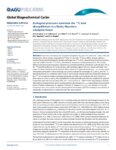 |
Bowling, David R. | Ecological processes dominate the 13C land disequilibrium in a Rocky Mountain subalpine forest | Fossil fuel combustion has increased atmospheric CO2 by ≈ 115 μmol mol1 since 1750 and decreased its carbon isotope composition (δ13C) by 1.7-2‰(the 13C Suess effect). Because carbon is stored in the terrestrial biosphere for decades and longer, the δ13C of CO2 released by terrestrial ecosyst... | | 2014-01-01 |
| 22 |
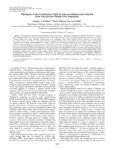 |
Bohs, Lynn A. | Phylogeny of the carolinense clade of solanum (Solanaceae) inferred from nuclear and plastid DNA sequences | The large and economically important genus Solanum contains ca. 1,400 species distributed worldwide. One of the 12-14 major clades identified in the genus is the Leptostemonum clade, or the "spiny solanums." Previous molecular phylogenetic studies have identified 14 major clades in the spiny solanum... | | 2014-01-01 |
| 23 |
 |
Bowling, David R. | Impacts of anthropogenic emissions and cold air pools on urban to montane gradients of snowpack ion concentrations in the Wasatch Mountains, Utah | Urban montane valleys are often characterized by periodic wintertime temperature inversions (cold air pools) that increase atmospheric particulate matter concentrations, potentially stimulating the deposition of major ions to these snow-covered ecosystems. We assessed spatial and temporal patterns o... | | 2014-01-01 |
| 24 |
 |
Jorgensen, Erik | Interferometric localization microscopy | Interference of signal in Fourier space, emitted from single probes, is used to localize it by recording and computing the phase of the fringes. Such system has applications in super resolution localization microscopy. | | 2014-01-01 |
| 25 |
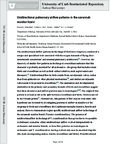 |
Farmer, Colleen G. | Unidirectional pulmonary airflow patterns in the savannah monitor lizard | The unidirectional airflow patterns in the lungs of birds have long been considered a unique and specialized trait associated with the oxygen demands of flying, their endothermic metabolism1 and unusual pulmonary architecture2,3. However, the discovery of similar flow patterns in the lungs of crocod... | | 2014-02-20 |

























